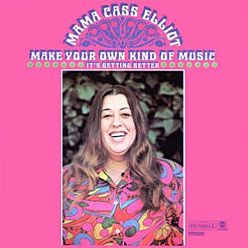“You’ve got to make your own kind of music, sing your own special song. Make your own kind of music, even if nobody else sings along.” – Cass Elliot
The purpose of this activity is to begin to explore our own definition of what is consonant and dissonant about our self-image. In the Western Culture most of us are trained to feel tension when we hear dissonant chords and to feel harmony or release when the chord or tone is changed to consonant. But our responses to music are subjective and each one of us has our own unique preference to what music we enjoy, and what sound combinations cause us to feel.
Our culture has also influenced our opinion of our bodies and how we feel about ourselves. This activity is designed to help separate or identify sources of our negative body image and begin to define our own sense of body acceptance.
Materials
Any combination of collage materials, pens, pencils, paints, scissors, gluesticks, adhesive tape, photographs, but be sure to have large sheets of paper for the foundation of the finished product.
How to
- In a group or with a journal discuss/free-write aspects of yourself that you like and accept. These can be physical attributes, or skills, talents, frames of intelligence, etc.
- Identify if there are any areas that you like and accept about yourself even if other people don’t.
- Examine the list for patterns of what you accept about yourself and what you don’t and what messages you received (and where they came from) about what was acceptable and what wasn’t.
- Using the available art materials create a visual represenation of at least one aspect of yourself that you appreciate despite external pressure that you are wrong to feel this way and what contributes to your being able to do this.
- Remember we are looking at identifying that there is a part of us that can hold on to ourselves in a positive self-accepting way despite what others may tell us and this strenth can be generalized to how we feel about our bodies.
- If this is an Expressive Arts Therapy Group have the participants act out some of the scenes/situations depicted in the art work. You can also role play scenes where the participant practices holding on to positive body image despite negative external messages.
Special Note: In a Music Therapy Group, play samplings of music from different genres and cultures and have the participants react either through writing or art whether the music evokes feelings of dissonance or consonance. Compare with other group members and discuss the diversity of what feels right and where those messages came from.
This expressive arts directive is from contributing guest author Dr. Deah Schwartz. Once a month, Dr. Schwartz shares an art therapy activity or idea to facilitate exploration, increased awareness and healing in the areas of body dissatisfaction and eating disorders. Some of these activities may need to be facilitated over more than one session, or modified for different ability levels, size of group, budget and size of work space. These directives may be used in individual or group therapy sessions or as self-help activities. Sometimes the activity itself is nothing new or brilliant but the OBJECTIVE of the directive is unique and specifically tailored to exploring issues related to body image and disordered eating. ENJOY! Fun is the main ingredient! Learn more about eating disorder therapy here.
 by
by
Leave a reply